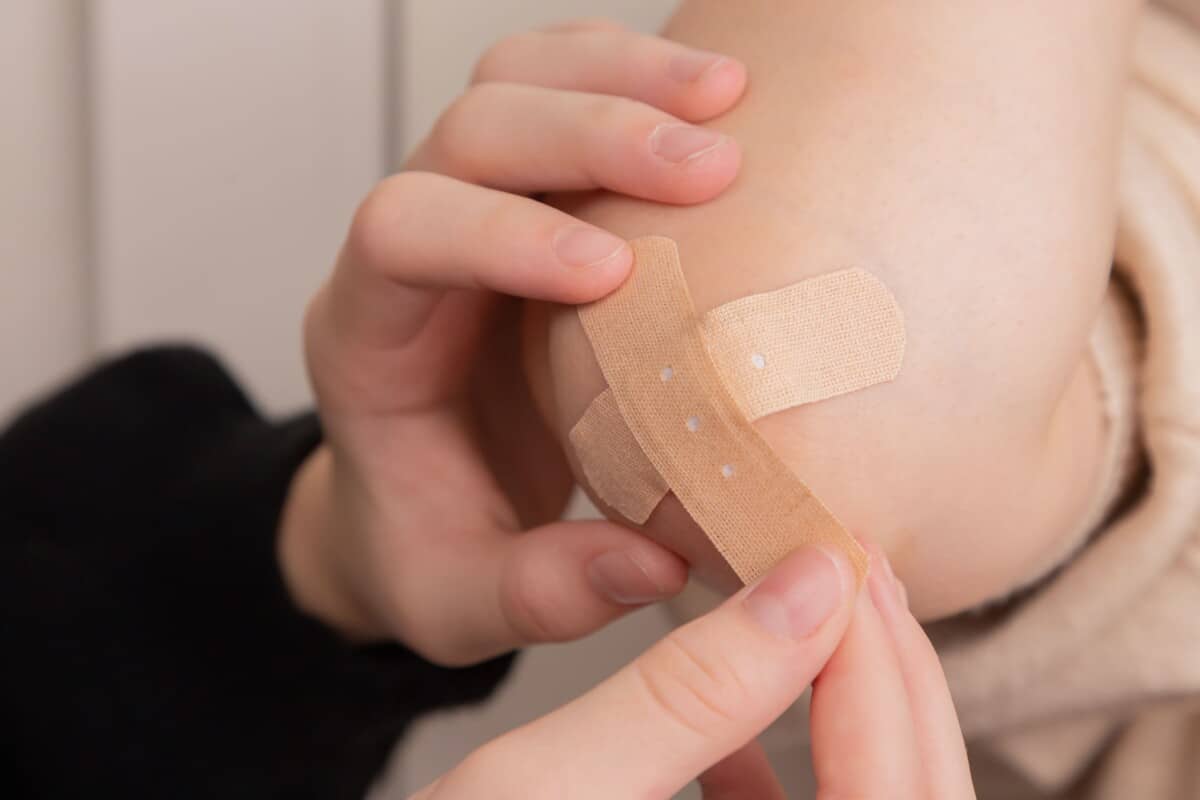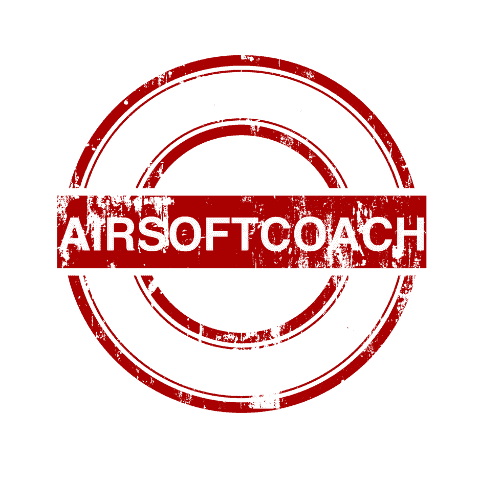
While airsoft is generally considered a safe and fun hobby, one question that often arises is whether or not airsoft pellets hurt.
The answer to this question is not straightforward and depends on various factors, such as the power of the gun, the distance from which the pellet is fired, and the location of the impact.
In this article, we will explore the topic of airsoft pellet pain and provide a detailed answer to this commonly asked question.
Firstly, it is important to note that airsoft pellets are not designed to cause pain or injury. Unlike real bullets, airsoft pellets are not lethal and are designed to be used in a safe and controlled environment. Most airsoft games take place on designated fields or indoor arenas that have safety rules in place to ensure that players do not get hurt.
That being said, airsoft pellets can still cause some degree of pain or discomfort when they hit you, depending on a few factors.
Do Airsoft Guns Hurt?
Airsoft guns use spring, electric, or compressed air systems to propel the BBs at speeds from 200 to 500 feet per second. This is enough force to cause temporary stinging or welting when BBs strike exposed skin, but not enough to break the skin or cause bleeding except at very close range.
Being shot by an airsoft gun does hurt and the pain varies depending on where on the body you have been hit. However, the pain is minor and fades away after a couple of days.
The slight pain helps make airsoft combat feel more realistic. Protective clothing, masks, and goggles should be worn to prevent excessive impacts.
Factors That May Cause BBs To Hurt
1. Velocity
The speed at which an airsoft pellet travels can have a significant impact on how much it hurts. Airsoft guns can shoot pellets at different velocities, with some guns capable of firing pellets at speeds of over 500 feet per second (fps). The faster a pellet is traveling, the more force it will have when it hits you, and the more it will hurt.
2. Distance
The distance between the shooter and the target also plays a role in how much it hurts when an airsoft pellet hits you. The closer the shooter is to you, the less time the pellet has to lose velocity and energy, which means it will hit you with more force. Conversely, if the shooter is far away, the pellet will have more time to slow down and lose energy, which will make it less painful when it hits you.
3. Weight
The weight of the airsoft pellet can also affect how much it hurts. Heavier pellets will have more momentum and will hit you with more force than lighter pellets. However, heavier pellets also slow down more quickly, so they may not hurt as much if they are shot from a distance.
4. Protective Gear
Wearing protective gear can significantly reduce the amount of pain or discomfort you feel when you get hit by an airsoft pellet. Most airsoft players wear eye protection, such as goggles or a face mask, to prevent eye injuries. Some players also wear gloves, padded clothing, or a chest protector to reduce the impact of the pellets.
5. Location
Depending on where you get hit by a BB can determine how much it hurts. For example, being shot in the face hurts a hell of a lot more than being shot in the back of the leg. However, as mentioned above, if you’re wearing a mask, this shouldn’t be a problem.
Airsoft pellets can cause some degree of pain or discomfort when they hit you, depending on factors such as velocity, distance, weight, and protective gear.
If you are concerned about the pain associated with getting hit by airsoft pellets, consider wearing protective gear and playing at a distance from other players.
Can An Airsoft Gun Kill You?
Airsoft guns are designed to be non-lethal and are not capable of killing a person. These guns shoot small plastic pellets, commonly known as BBs, which are lightweight and do not have enough kinetic energy to cause fatal injuries.
An airsoft gun cannot kill you. They are designed for recreational use and are typically considered safe, they can potentially cause serious harm. Factors such as high-velocity projectiles, proximity to vital organs, and improper safety measures can lead to life-threatening injuries.
In some cases, airsoft guns have caused serious eye injuries or broken skin, resulting in bleeding or bruising.
It is crucial that airsoft guns are only used in safe and controlled environments, such as designated fields or indoor arenas that have safety rules in place.
It is also important to be aware of the power and velocity of airsoft guns. In some countries, including the United States, there are legal limits on the velocity at which airsoft guns can shoot pellets. These limits are in place to prevent serious injuries and ensure that airsoft guns remain non-lethal.
What Are The Legal Limits On Velocity In Airsoft?
Airsoft guns are popular all over the world, but the laws and regulations governing their use can vary from country to country.
One important aspect of airsoft gun regulations is the power limit, which refers to the maximum velocity at which an airsoft gun can shoot pellets. In this article, we will look at the airsoft power limits on airsoft guns in 10 popular countries.
1. United States
In the United States, the power limit for airsoft guns is 1.64 joules (1.2 ft-lbs) for all airsoft guns sold or imported. Some states may have additional restrictions, such as California, which requires airsoft guns to have an orange tip on the barrel.
2. Canada
In Canada, the power limit for airsoft guns is 500 fps (feet per second) or 5.7 joules (4.2 ft-lbs). Airsoft guns must also have a muzzle velocity of 366 fps or less in order to be imported into Canada.
3. United Kingdom
In the United Kingdom, the power limit for airsoft guns is 1.3 joules (0.96 ft-lbs) for fully automatic guns and 2.5 joules (1.84 ft-lbs) for single-shot guns. Airsoft guns must also be painted in bright colors to distinguish them from real firearms.
4. Australia
In Australia, the power limit for airsoft guns is 1.14 joules (0.84 ft-lbs) for fully automatic guns and 2.3 joules (1.7 ft-lbs) for single-shot guns. Airsoft guns are also subject to strict licensing and storage requirements.
5. Japan
In Japan, the power limit for airsoft guns is 0.98 joules (0.72 ft-lbs) for fully automatic guns and 1.3 joules (0.96 ft-lbs) for single-shot guns. Airsoft guns must also be painted in bright colors and have a unique serial number.
6. France
In France, the power limit for airsoft guns is 2 joules (1.47 ft-lbs) for all guns. Airsoft guns must also be registered with the police and be equipped with a muzzle velocity reducer.
7. Germany
In Germany, the power limit for airsoft guns is 7.5 joules (5.53 ft-lbs) for single-shot guns and 0.5 joules (0.37 ft-lbs) for fully automatic guns. Airsoft guns must also be registered with the police and be equipped with a muzzle velocity reducer.
8. Italy
In Italy, the power limit for airsoft guns is 1.5 joules (1.1 ft-lbs) for all guns. Airsoft guns must also be registered with the police and have a unique serial number.
9. Spain
In Spain, the power limit for airsoft guns is 3.5 joules (2.58 ft-lbs) for single-shot guns and 1.3 joules (0.96 ft-lbs) for fully automatic guns. Airsoft guns must also be registered with the police and be equipped with a muzzle velocity reducer.
10. Russia
In Russia, the power limit for airsoft guns is 3 joules (2.21 ft-lbs) for all guns. Airsoft guns must also be registered with the police and have a unique serial number.
What Is A Muzzle Velocity Reducer In Airsoft?
A muzzle velocity reducer, also known as a power-down device, is a component that can be installed in an airsoft gun to reduce its muzzle velocity. It is commonly used by airsoft players who want to bring their gun’s velocity within legal limits or reduce the risk of causing injury.
Muzzle velocity reducers come in different types and designs, but they all work by restricting the flow of air that propels the BB out of the barrel. This can be achieved by adding a restrictor or spacer to the barrel, changing the size or shape of the air nozzle, or adjusting the spring tension.
When installed correctly, a muzzle velocity reducer can lower the velocity of an airsoft gun by up to 30-50%, depending on the type and design of the reducer. This can bring the gun’s velocity within the legal limits of a particular country or field, which is important to ensure safety and prevent injury.
It is important to note that installing a muzzle velocity reducer can affect the performance and accuracy of an airsoft gun. The reduction in velocity can lead to a decrease in range and accuracy, as well as a change in the trajectory of the BB. Therefore, it is important to test and adjust the gun’s hop-up and sight before using it with a muzzle velocity reducer.
Conclusion
Airsoft pellets can cause some pain and leave a mark on the skin, but they are unlikely to cause serious injury as long as safety rules are followed and proper protective gear is worn. It is important to be aware of the risks involved in airsoft and take necessary precautions to ensure a safe and enjoyable experience.

